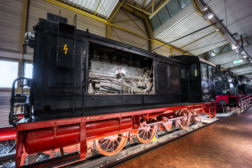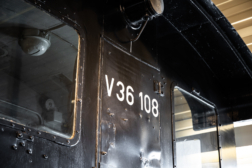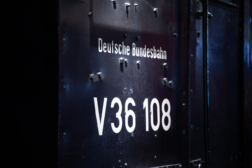Diesel locomotive V36 108
Diesel locomotive V 36 108
1940
From the 1920s, Germany began to build diesel trains on a larger scale. This trend was interrupted when the National Socialists came to power. The Nazi regime, striving for economic autonomy, wanted to avoid the import of oil. However, from 1935 onwards, locomotives with combustion engines were built for war service. Unlike steam engines, diesels did not emit visible clouds of smoke and were therefore safer from air raids. All the major German manufacturers were involved in the diesel locomotive building programme that began in 1935, developing multiple classes. Power outputs ranged from 110 to 550 HP with mechanical and hydrodynamic transmission.
The V 36 was originally produced for the Wehrmacht. A total of 292 locomotives were built and originally given the designation "WR 360 C 14". The later V 36 name refers to the type of power generation – V stands for Verbrennungsmotor (combustion engine) – and the power output of 360 HP. After the war, the V 36 was used in both East and West Germany to haul passengers and freight on secondary lines and as a shunting engine.


